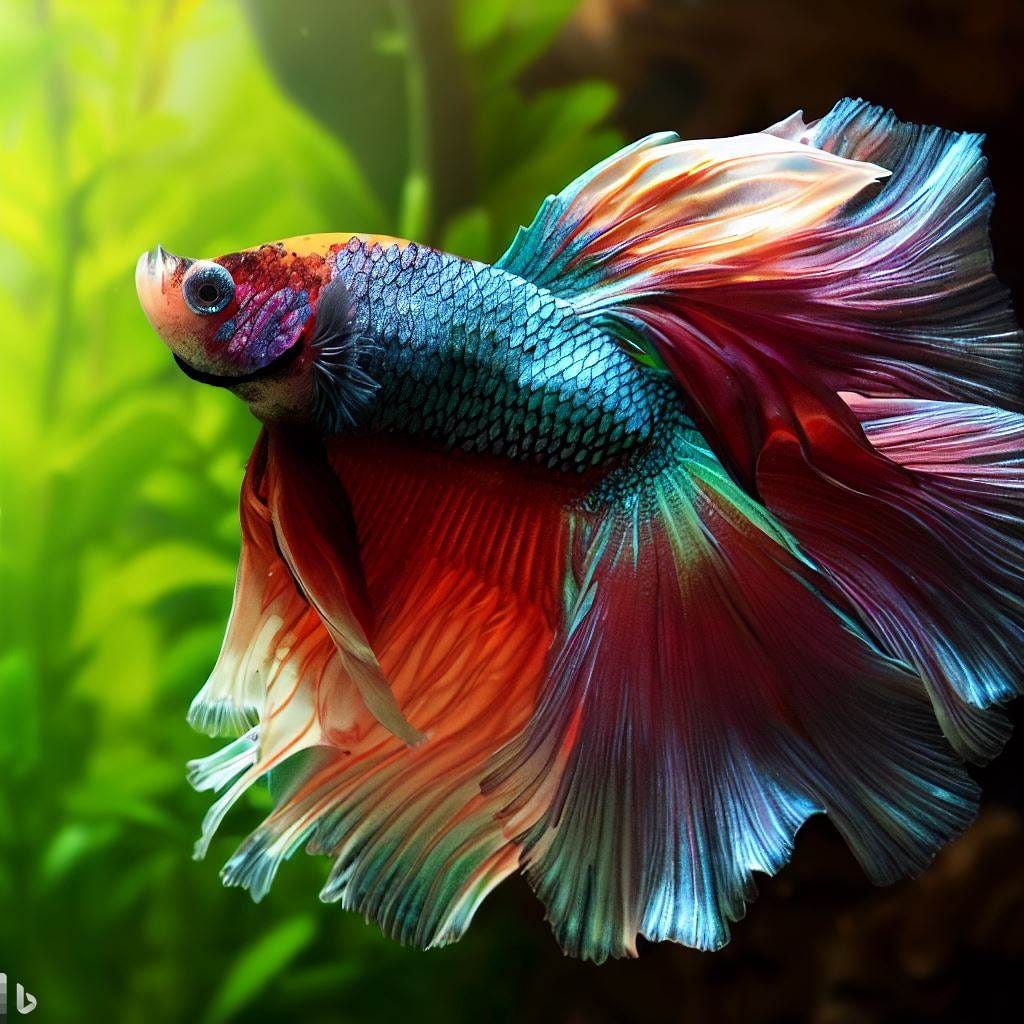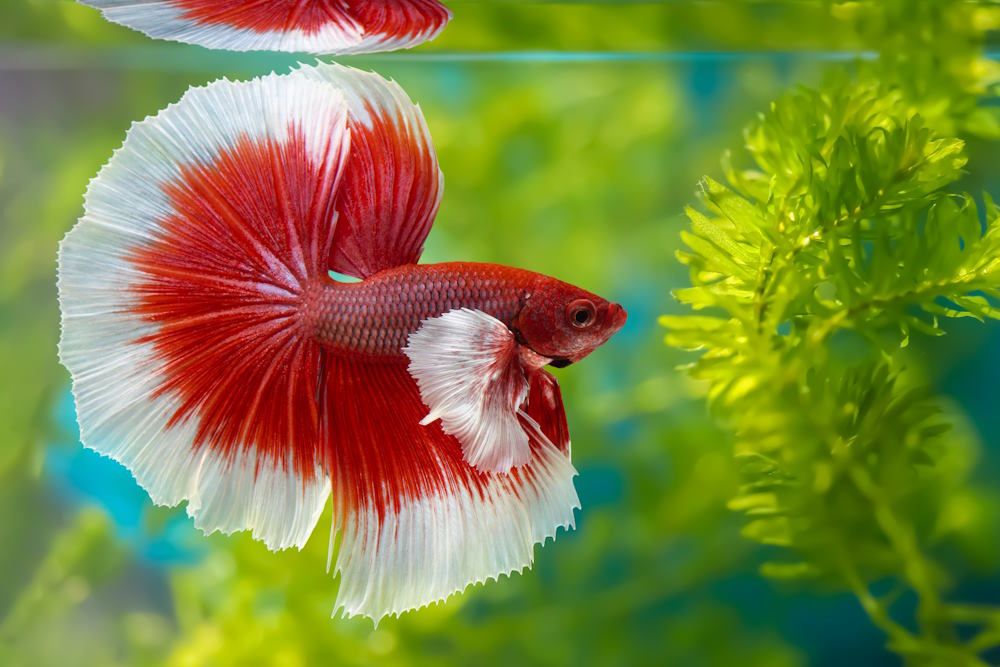How to Pick the Right Betta Fish for Your Fish tank
How to Pick the Right Betta Fish for Your Fish tank
Blog Article
Reproducing Betta Fish: a Comprehensive Step-By-Step Guide to Successfully Raising Infant Bettas From Eggs to Adulthood
Reproducing Betta fish is a meticulous venture that calls for cautious planning and execution to make certain the successful growth of fry from eggs to mature fish. Selecting genetically diverse reproduction pairs with desirable attributes is just the start; creating an optimum environment and comprehending the ins and outs of the breeding procedure are equally essential. As the male Betta vigilantly constructs a bubble nest and guards the precious eggs, the succeeding stages of care and shift need interest to information and expertise of ideal techniques. Just how does one browse the tough yet gratifying path of nurturing these dynamic animals to the adult years?

Choosing Reproduction Pairs
When beginning on the trip of reproducing Betta fish, picking the ideal breeding sets is vital to achieving desirable traits and a healthy lineage - betta fish. The primary step in this procedure is to identify the particular traits you want to boost or protect, such as shade, fin kind, and body shape. It is crucial to choose genetically varied pairs to avoid inbreeding, which can bring about health issues and unwanted features
Examine potential reproducing prospects thoroughly. A healthy male Betta must show vibrant colors, an active disposition, and well-formed fins, while the female ought to also present vibrant pigmentation and a rounded stomach, suggesting readiness for spawning. Observing the character of both fish is essential, as aggressive or excessively shy people may not breed efficiently.
Documents of family tree is just as important. Keeping records of the moms and dad fish's origins can aid you track genetic qualities and prospective concerns. In addition, consult credible breeders or on the internet resources for support on picking suitable sets. Inevitably, investing time in the option procedure will substantially improve the probability of producing solid, lively spawn that meet your breeding goals (betta fish).

Preparing the Breeding Tank
Producing an ideal reproduction setting is a vital step after picking appropriate sets for Betta fish. The breeding storage tank must be particularly created to give convenience and stimulate the all-natural reproduction habits of the fish. Beginning with a tank size of a minimum of 10 gallons to make certain adequate space for both the male and women Bettas.
Maintain a gentle purification system to maintain the water clean while preventing strong currents that can emphasize the fish. In addition, an air stone can be contributed to supply oxygenation without interrupting the water surface also a lot.
Temperature level regulation is crucial; go for a steady range of 78-82 ° F(25-28 ° C) using a reliable heating system. The pH level need to be kept between 6.5 and look at this website 7.5, and regular water modifications are required to make certain high water high quality.
Include drifting plants or spawning sponges to produce hiding spots for the female, while additionally motivating bubble nest structure by the male - betta fish. Finally, guarantee the tank is cost-free from sharp decorations and any possible dangers, as the welfare of the fish should always be focused on during this essential phase of reproduction.
The Breeding Process
Usually, the breeding process for Betta fish entails a collection of distinct and observable habits that indicate readiness for reproduction. The male Betta starts by constructing a bubble nest at the water's surface area, which serves as a website for the fertilized eggs. This Source nest is crucial, as it gives a safe atmosphere for the eggs till they hatch.
When the nest is established, the man will show courtship actions, such as flaring his fins and displaying vivid shades to draw in the lady. The lady, upon sensing the man's readiness, will certainly react by showing upright stripes along her body, indicating her receptiveness.
The fed eggs after that fall to the bubble nest, where the male thoroughly accumulates and returns them to the nest. Following this, the male presumes responsibility for securing the nest and guaranteeing the safety and security of the eggs up until they hatch out, normally within 24-36 hours.
Caring for Betta Fry
Caring for Betta fry calls for cautious attention to their atmosphere and nourishment to guarantee healthy and balanced growth and development. After hatching, Betta fry are incredibly tiny and at risk, demanding a steady and tidy environment.
Feeding Betta fry is just as crucial. They must be offered infusoria or finely smashed top notch fry food, as their mouths are also tiny to take care of bigger bits. As they grow, you can gradually introduce larger foods, such as infant salt water shrimp or powdered flakes, to ensure they obtain sufficient nutrition. Feed them browse this site little quantities a number of times a day, being cautious not to overfeed, which can result in water high quality issues.
Transitioning to Grownup Bettas
As Betta fry fully grown, transitioning them to grown-up Bettas is a vital stage that calls for careful management of their atmosphere and social communications. This process normally starts when the fry reach around six weeks old, whereupon they can be gradually presented to a more structured living environment.
To promote this transition, it is vital to make sure that the water parameters-- such as temperature level, pH, and ammonia degrees-- are optimum and steady. Grown-up Betta fish flourish in cozy water (around 78-80 ° F) with a pH of 6.5 to 7.5. Slowly accustom the fry to these conditions to minimize stress.
Social interactions are another vital factor; male Bettas are infamously territorial and hostile. It is advisable to different men into individual tanks as they grow. Female Bettas can be housed together, but treatment ought to be taken to check for signs of aggression.
Furthermore, dietary adjustments must be made as the fry expand. Include top quality pellets and live foods to support their growth and health and wellness. By taking care of these aspects properly, you can advertise an effective transition to the adult years for your Betta fish.

Verdict
Effective reproduction of Betta fish needs cautious attention to information throughout the entire process, from choosing genetically diverse sets to providing optimum look after fry. By making sure appropriate reproduction conditions and preserving water top quality, the likelihood of healthy and balanced children enhances dramatically. In addition, a well balanced diet plan and gradual adaptation to adult atmospheres are important for the growth and advancement of Betta fish. Following these steps faithfully cultivates a growing populace of Betta fish, improving both their health and wellness and vigor.
Report this page